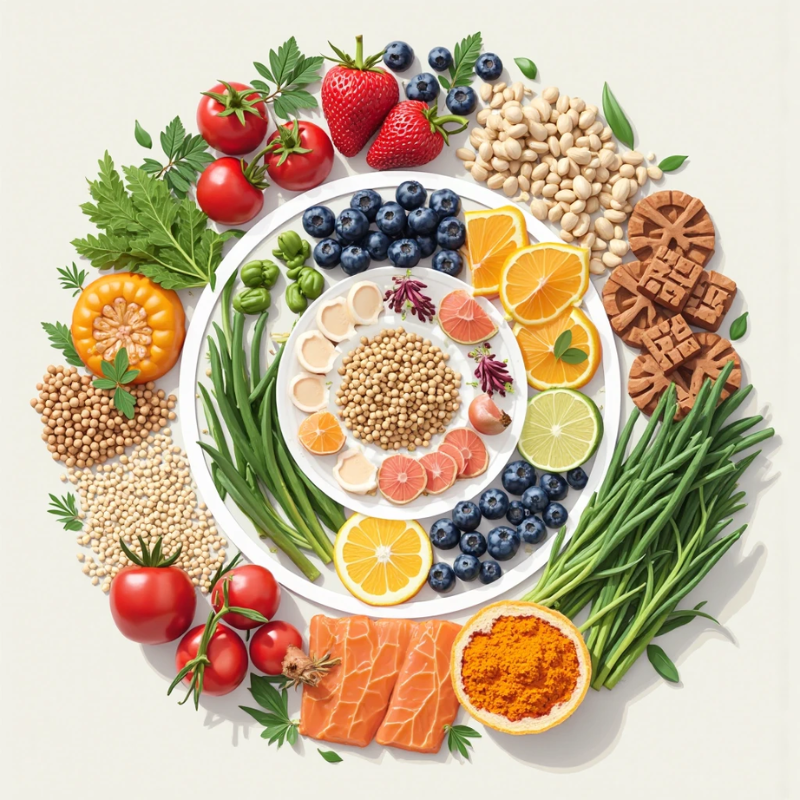Inflammation is the body’s natural defense mechanism, helping to protect against injury and infection. However, when inflammation becomes chronic, it can silently contribute to serious health issues like arthritis, heart disease, diabetes, and autoimmune conditions. Fortunately, food can play a powerful role in reversing this. That’s where an anti-inflammatory diet plan for beginners comes in a practical, natural approach to improving health and reducing inflammation through everyday meals.
What Is an Anti-Inflammatory Diet?
An anti-inflammatory diet focuses on whole, nutrient-rich foods that naturally reduce inflammation in the body. It eliminates or minimizes processed foods, sugar, trans fats, and other pro-inflammatory ingredients. Instead, it emphasizes fruits, vegetables, whole grains, healthy fats, lean proteins, and healing herbs and spices.
For anyone new to clean eating, starting with an anti-inflammatory diet plan for beginners can be an effective way to boost energy, improve digestion, reduce pain, and support long-term wellness without relying on medication.
Benefits of an Anti-Inflammatory Diet

Adopting an anti-inflammatory lifestyle doesn’t just help with one specific issue it supports your overall well-being. Here are some of the key benefits:
- Reduces chronic pain and joint stiffness
- Promotes a healthy gut microbiome
- Boosts energy and mental clarity
- Improves skin health
- Lowers the risk of heart disease and type 2 diabetes
- Supports weight management
When paired with proper sleep, exercise, and stress management, an anti-inflammatory diet plan for beginners can help you feel noticeably better within a few weeks.
What to Eat on an Anti-Inflammatory Diet
The foundation of any anti-inflammatory diet is clean, whole foods that nourish your body and keep inflammation in check. Below are some core food groups to include:
Fruits and Vegetables
Packed with antioxidants, vitamins, and fiber, fruits and vegetables are the cornerstone of this diet.
- Top picks: Berries, leafy greens, bell peppers, broccoli, oranges, and sweet potatoes.
Whole Grains
Whole grains are rich in fiber, which aids digestion and supports a healthy gut.
- Best options: Quinoa, brown rice, oats, bulgur, and barley.
Healthy Fats
Not all fats are bad. Omega-3 fatty acids found in certain foods help reduce inflammation significantly.
- Sources: Fatty fish (salmon, mackerel), flaxseeds, walnuts, and olive oil.
Lean Proteins
Proteins help repair tissues and support immunity without triggering inflammation when sourced properly.
- Choose: Skinless poultry, legumes, tofu, lentils, and fatty fish.
Herbs and Spices
Many natural spices have anti-inflammatory properties and can add flavor without added salt or sugar.
- Use more of: Turmeric, ginger, garlic, cinnamon, and black pepper.
What to Avoid on an Anti-Inflammatory Diet
Certain foods are known to trigger or worsen inflammation and should be limited or avoided completely:
- Refined carbohydrates: White bread, pastries, and processed snacks
- Sugary drinks and desserts: Soda, candy, and baked goods
- Trans fats: Found in many packaged foods and fried items
- Excessive alcohol and red meat
- Highly processed and artificial foods
Minimizing these foods while following an anti-inflammatory diet plan for beginners can drastically improve your symptoms and overall health.
Sample 1-Day Anti-Inflammatory Meal Plan
Here’s a beginner-friendly meal plan to help you get started:
- Breakfast: Oatmeal topped with blueberries, chia seeds, and a touch of cinnamon
- Lunch: Grilled salmon with quinoa salad, spinach, cherry tomatoes, and olive oil dressing
- Snack: A handful of walnuts and a cup of green tea
- Dinner: Stir-fried vegetables with tofu, brown rice, and turmeric-seasoned sauce
- Dessert (optional): A piece of dark chocolate or a few slices of fresh mango
This simple structure offers variety, taste, and all the nutrients needed for a balanced anti-inflammatory diet plan for beginners.
Tips for Success on an Anti-Inflammatory Diet
Transitioning to a new way of eating can feel overwhelming, but these tips will help you stick with it:
- Start slow: Gradually replace inflammatory foods with healthier options.
- Meal prep: Planning and prepping meals ahead of time prevents impulsive choices.
- Read labels: Look for hidden sugars, hydrogenated oils, and additives.
- Stay hydrated: Water helps flush toxins and supports digestion.
- Listen to your body: Track how you feel after meals to identify what works best for you.
FAQs About the Anti-Inflammatory Diet
1. How long does it take to see results on an anti-inflammatory diet?
Most people start feeling more energetic and experience reduced pain or bloating within 1–2 weeks. Long-term benefits develop with consistency.
2. Is this diet suitable for people with food allergies?
Yes, it can be easily customized. For example, if you’re allergic to nuts or fish, there are plenty of plant-based alternatives that still offer anti-inflammatory benefits.
3. Can kids or elderly people follow this diet?
Absolutely. The foods in an anti-inflammatory diet plan for beginners are safe and beneficial for people of all ages, as long as it meets individual nutritional needs.
4. Will I lose weight on this diet?
Weight loss can happen naturally due to reduced inflammation, improved digestion, and healthier eating habits—but it’s not the primary focus.
5. Do I need supplements?
Not necessarily. Whole foods should be your main source of nutrients. However, supplements like omega-3s or turmeric may be helpful under medical guidance.
Conclusion
An anti-inflammatory diet plan for beginners is more than a trend—it’s a sustainable, science-backed approach to improving your health from the inside out. By choosing foods that nourish your body and eliminating those that cause harm, you’re giving yourself the best chance at long-term vitality and disease prevention.
If you’re ready to start your journey toward a healthier lifestyle, visit MindScribes for expert wellness guides, personalized diet tips, and tools that empower you to take control of your health—naturally.

